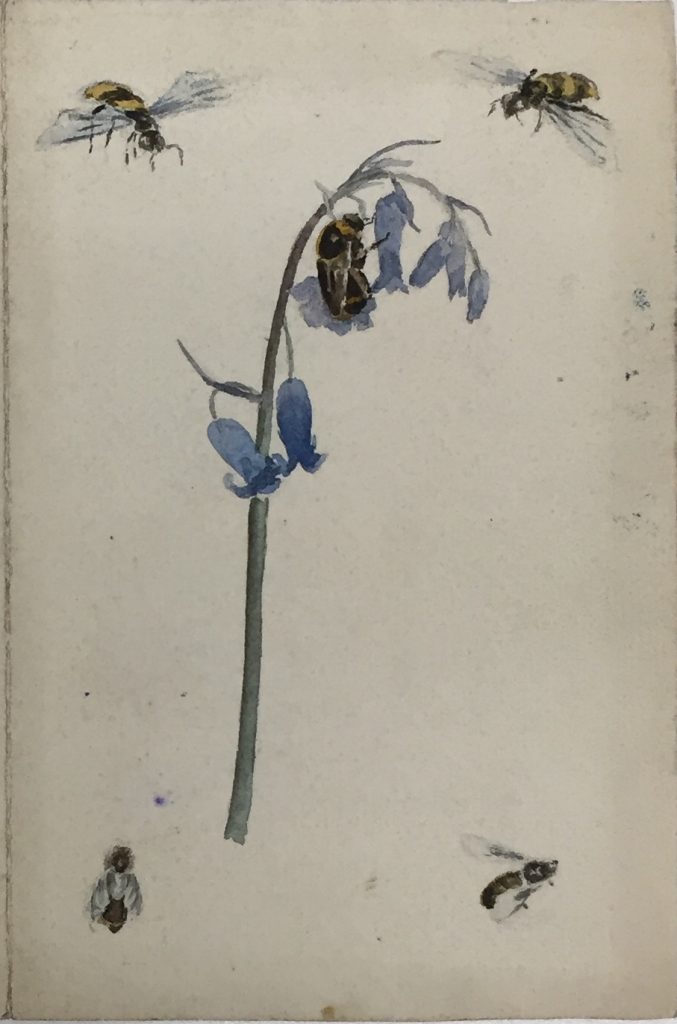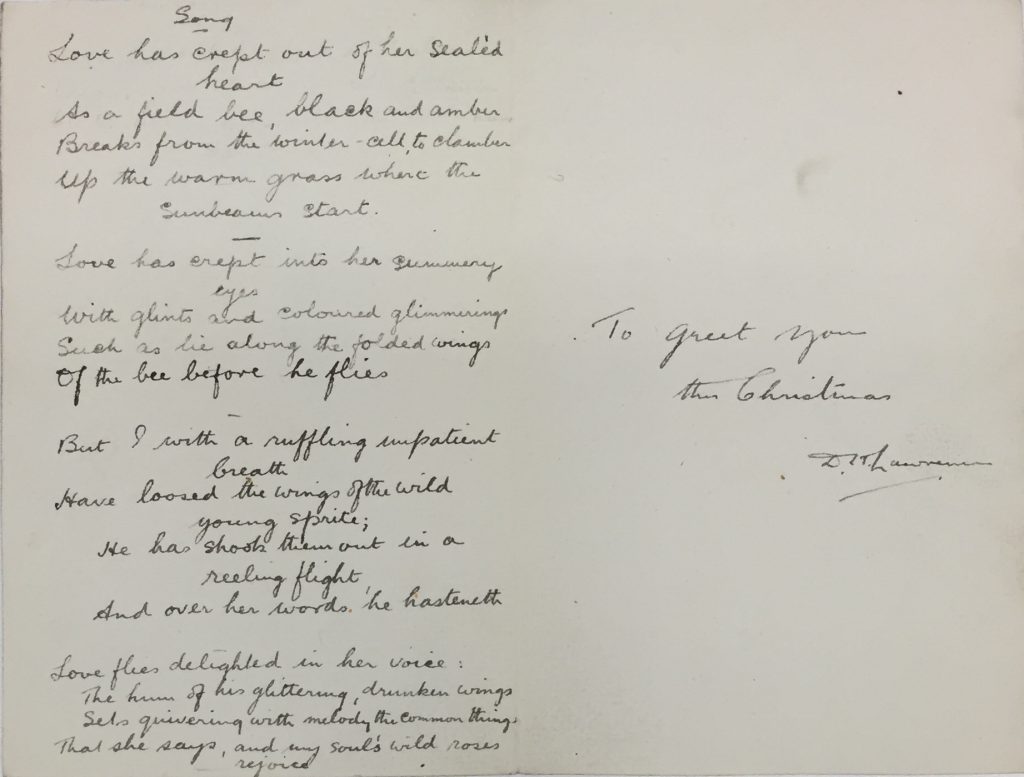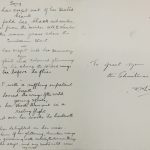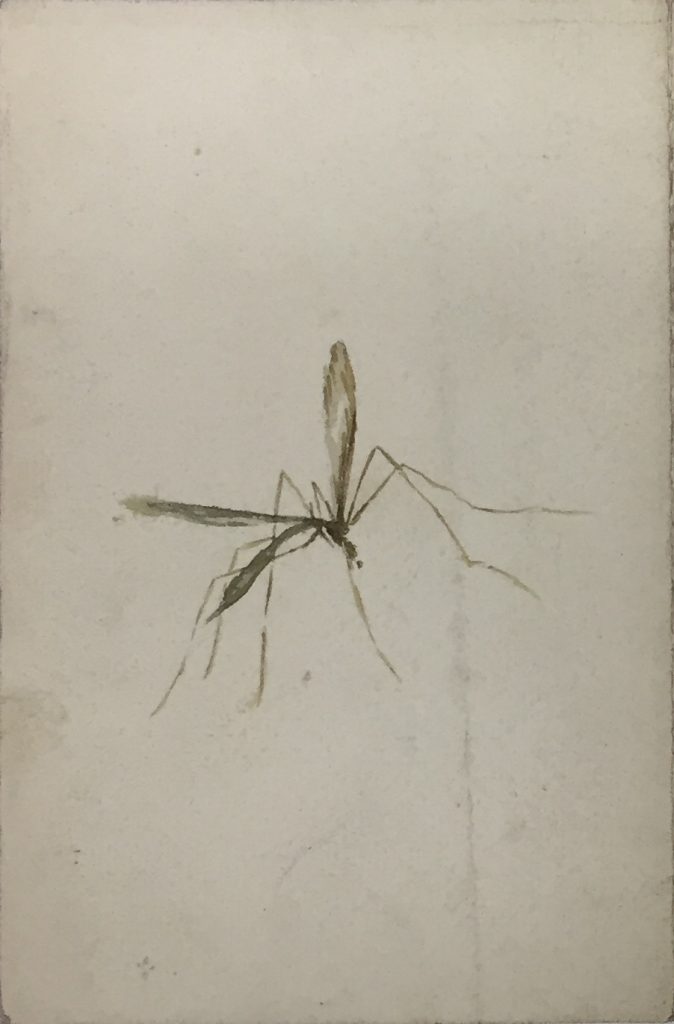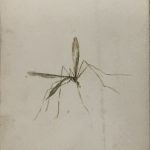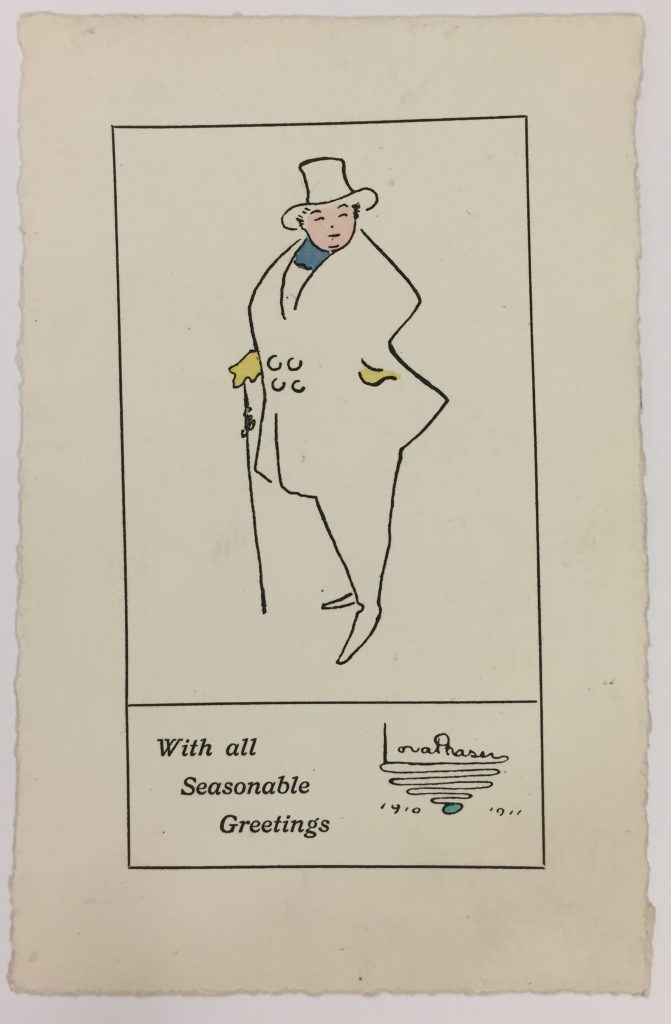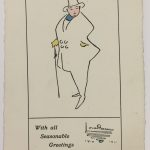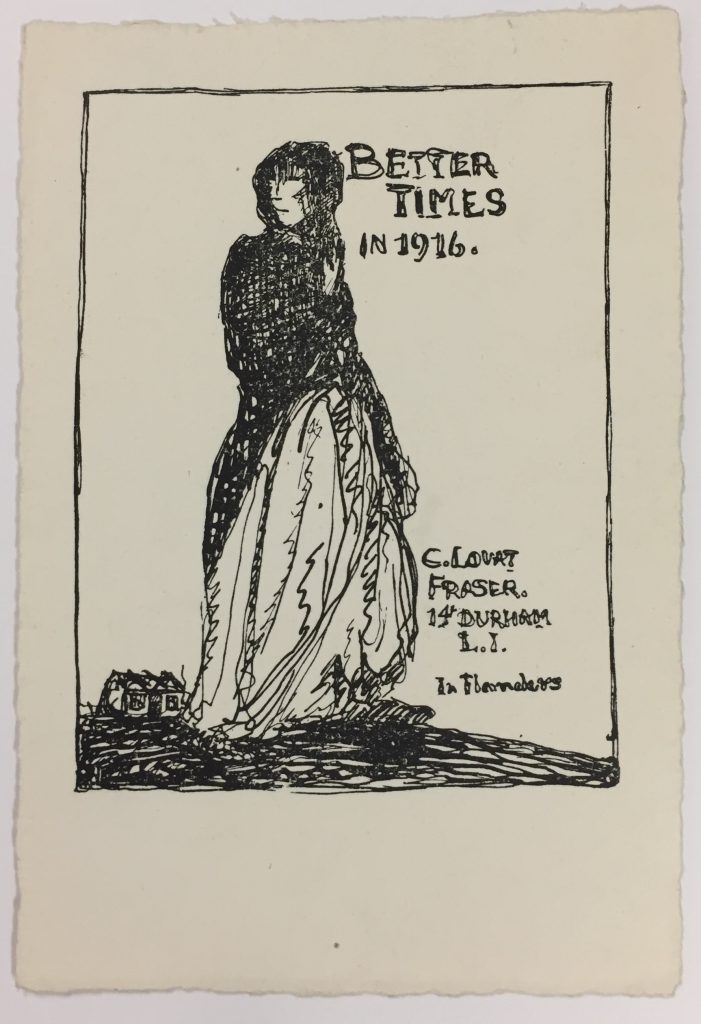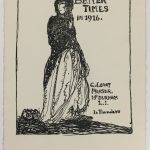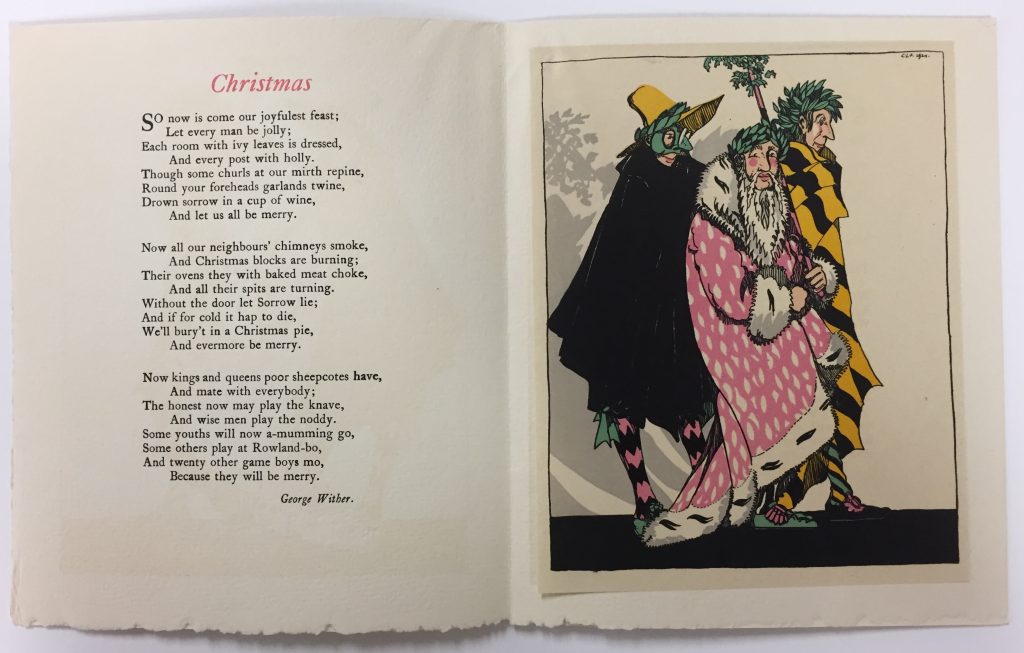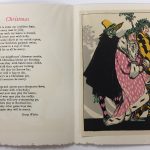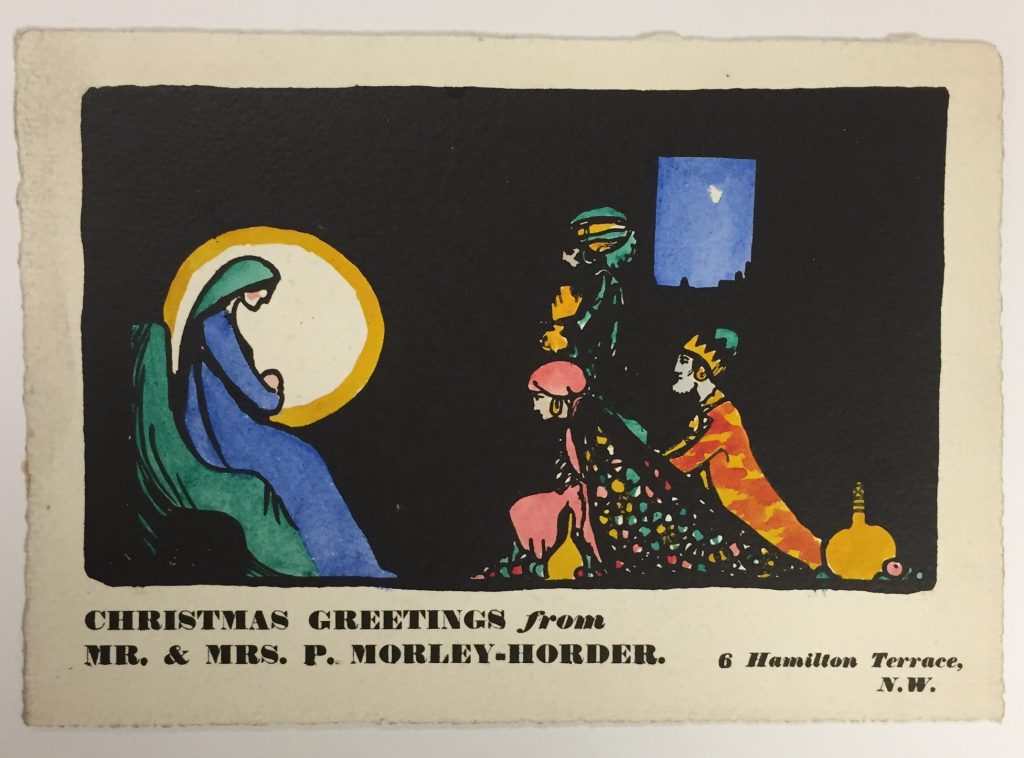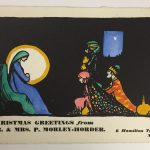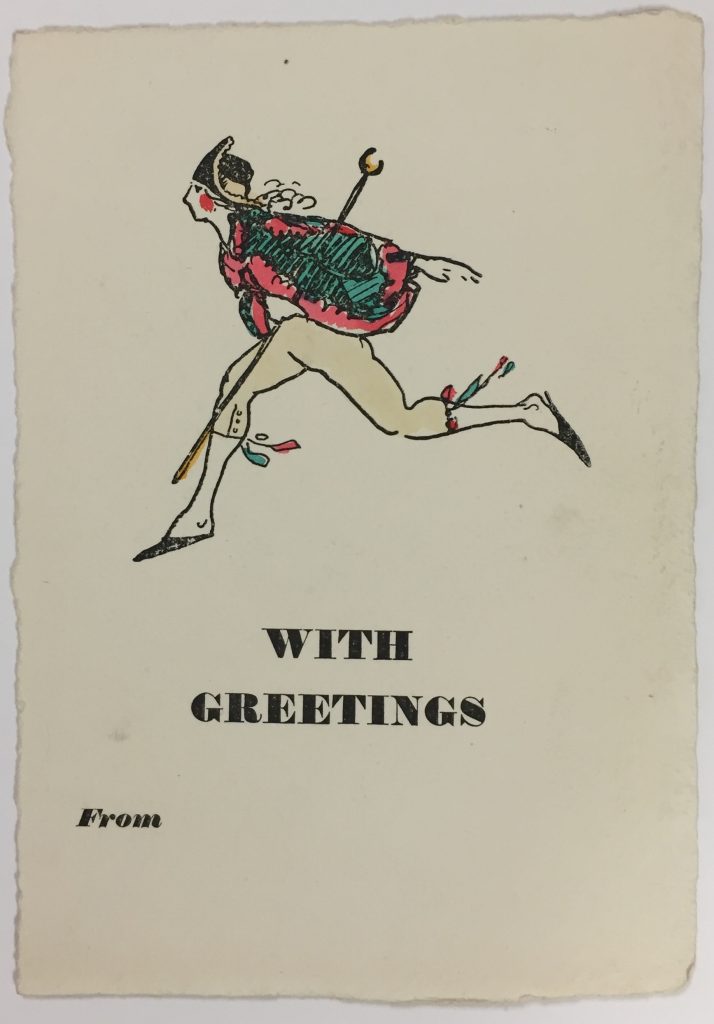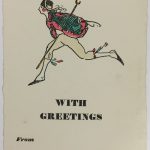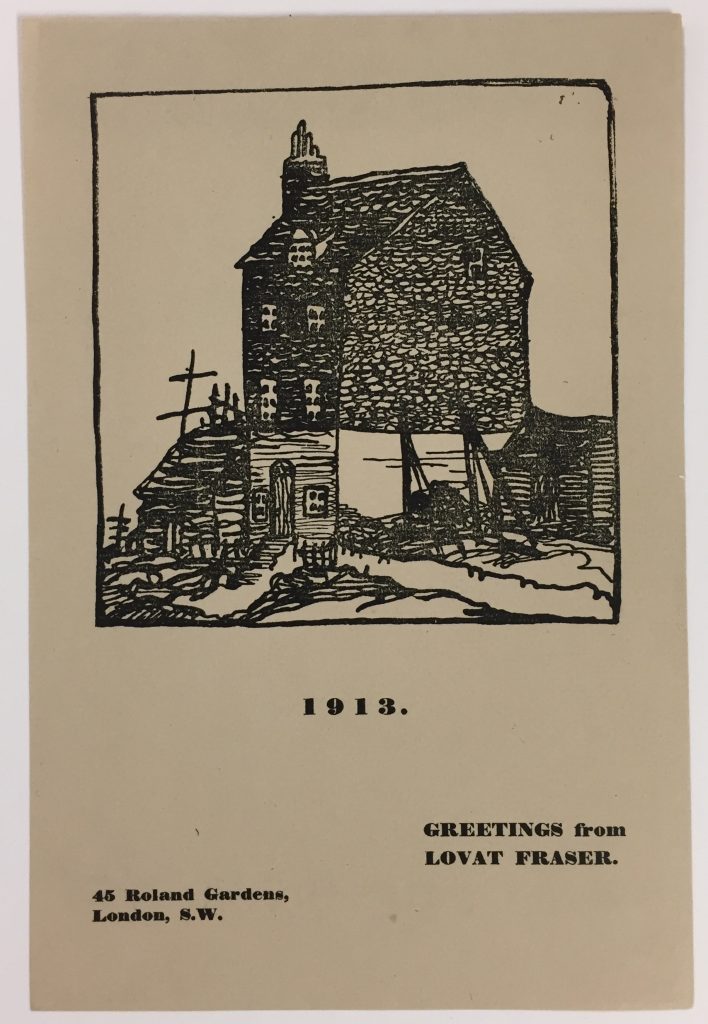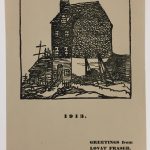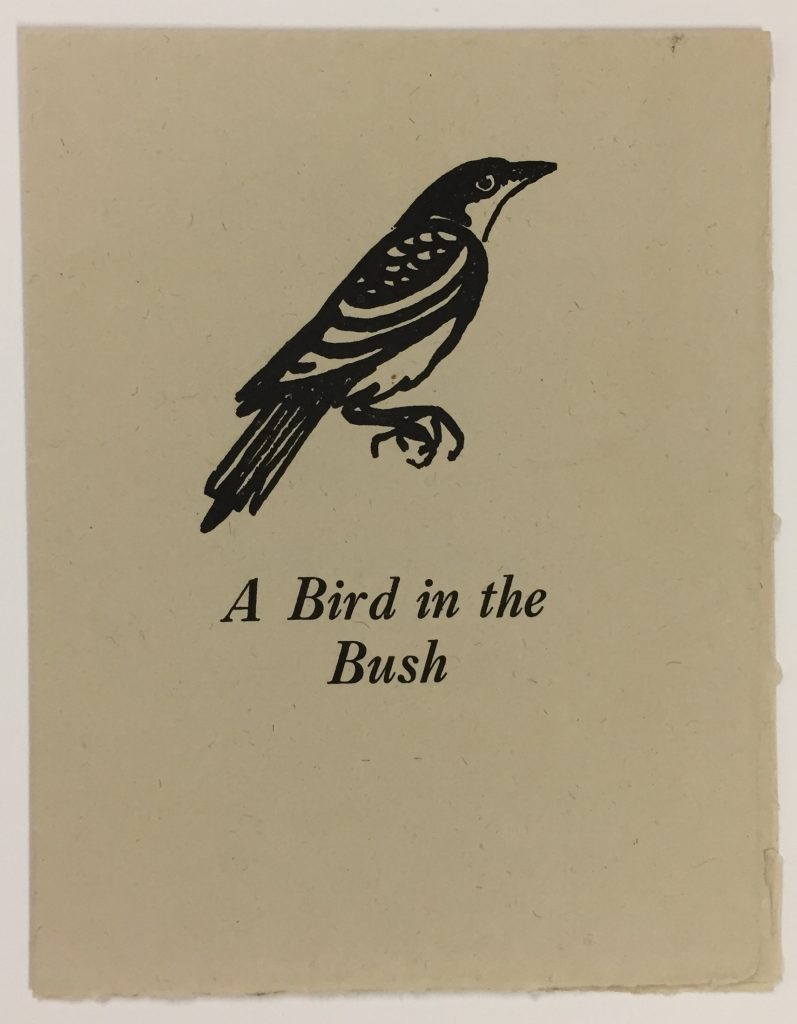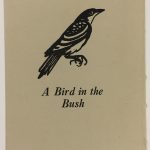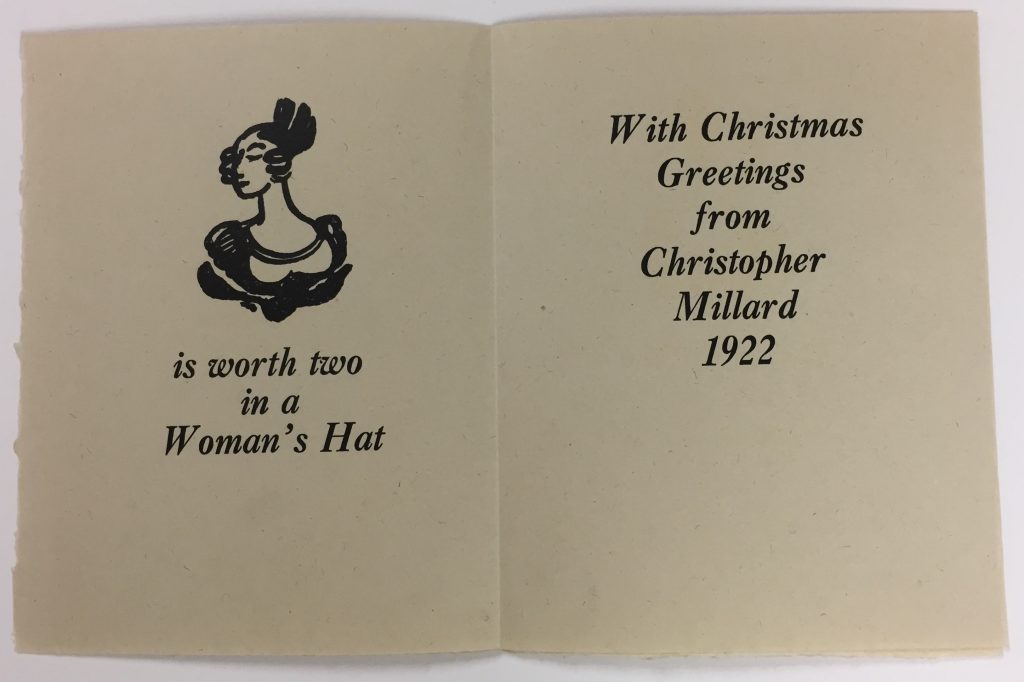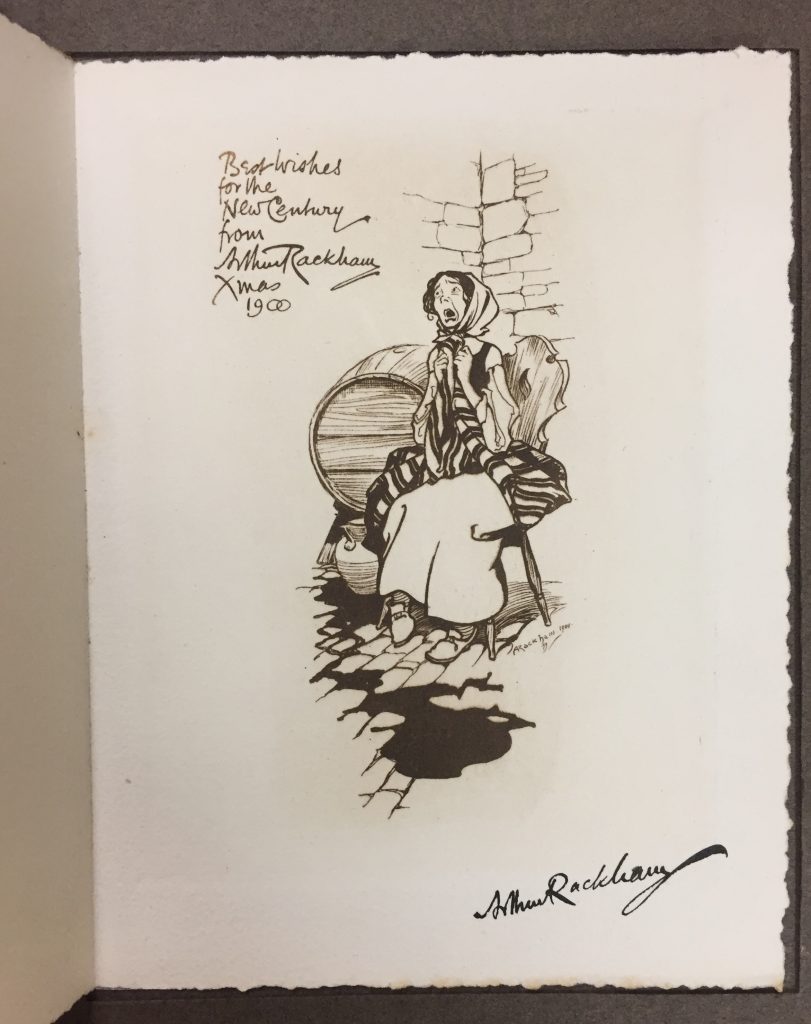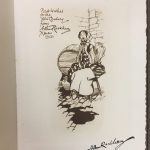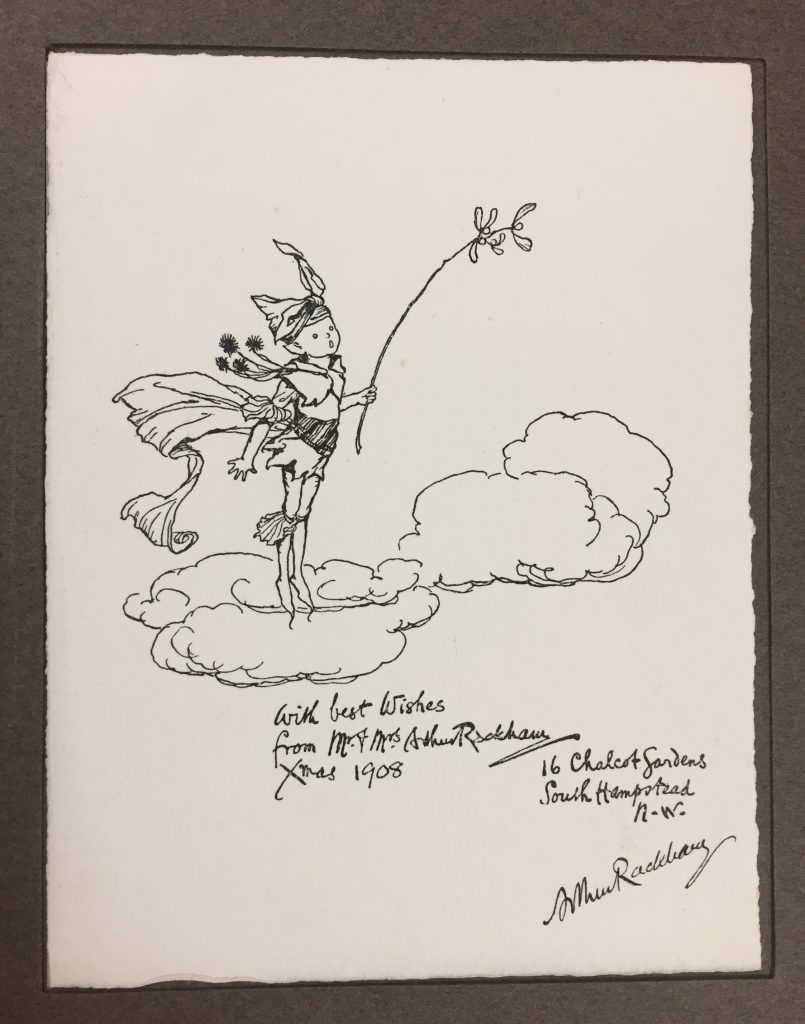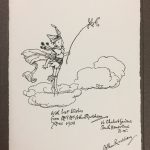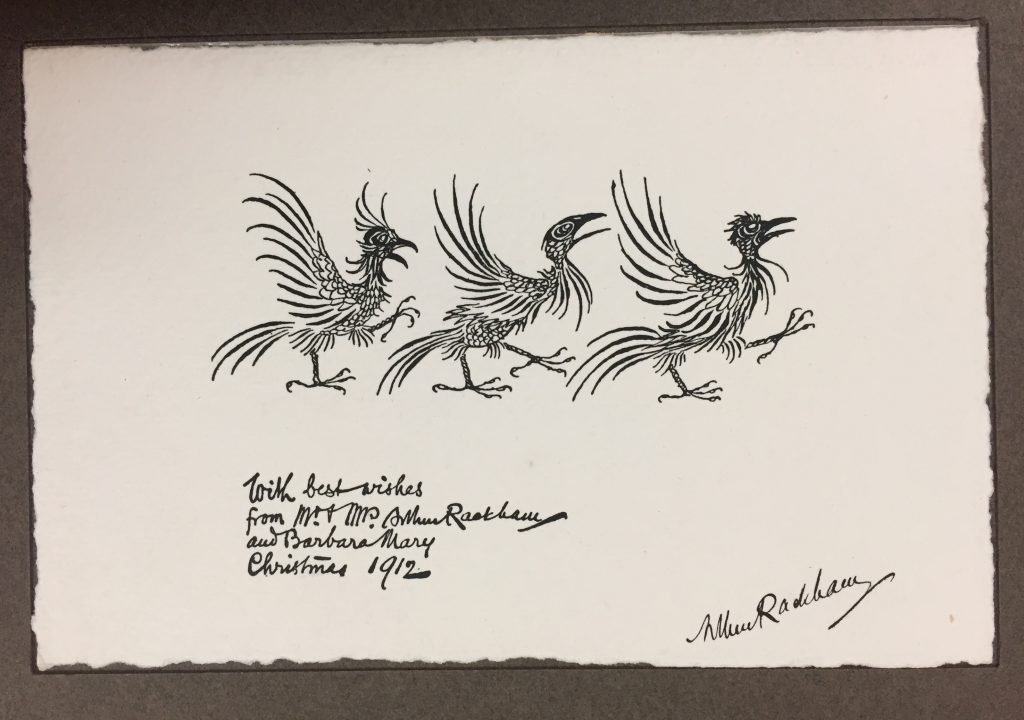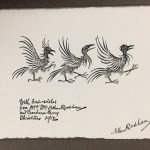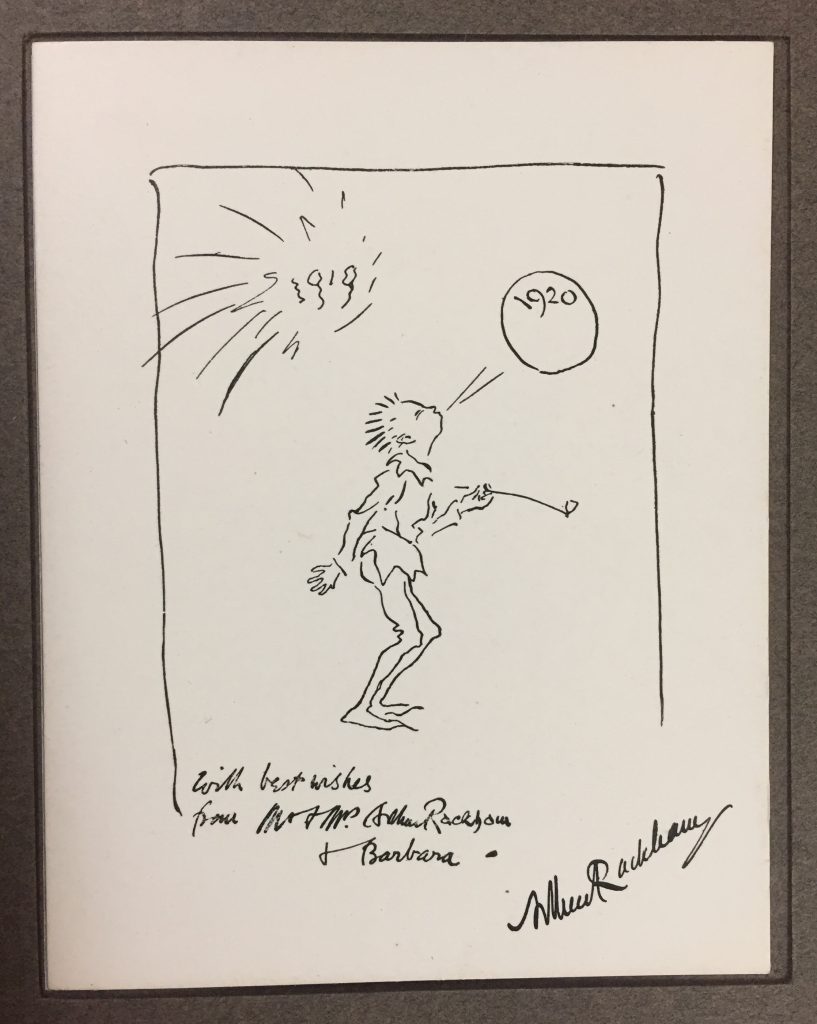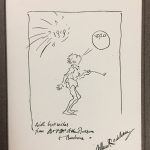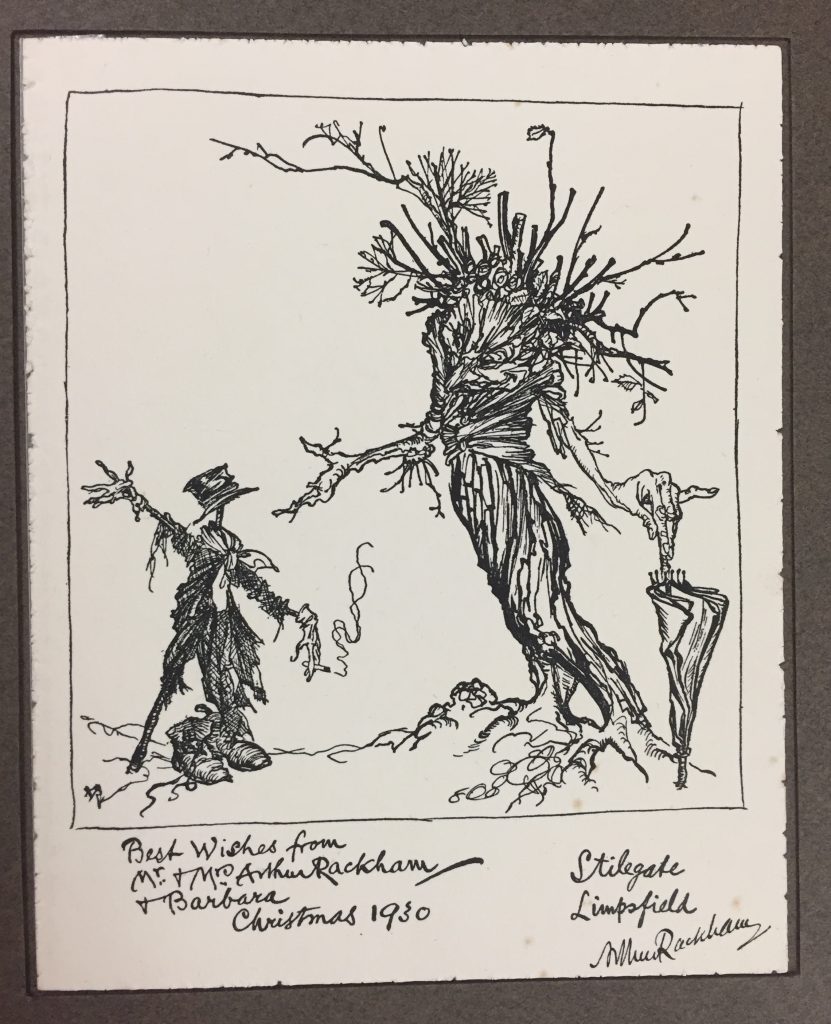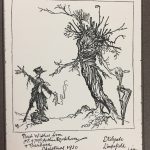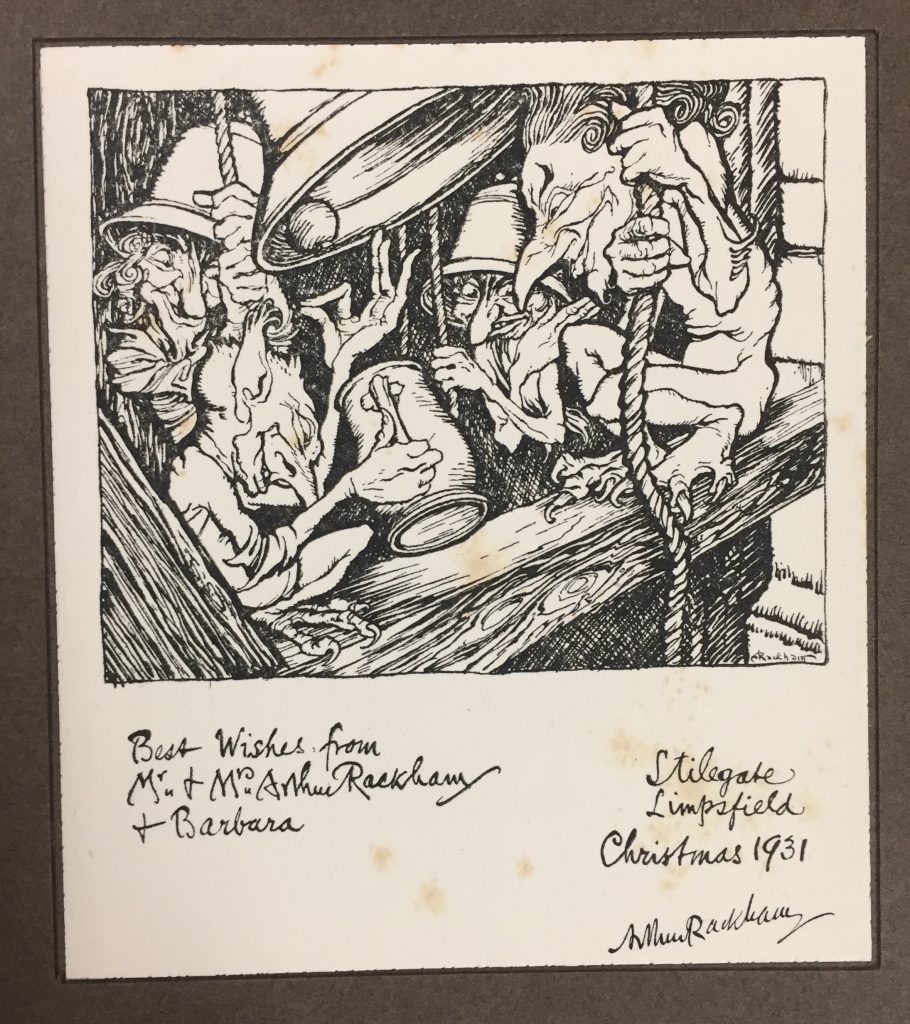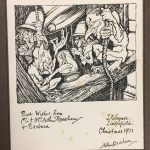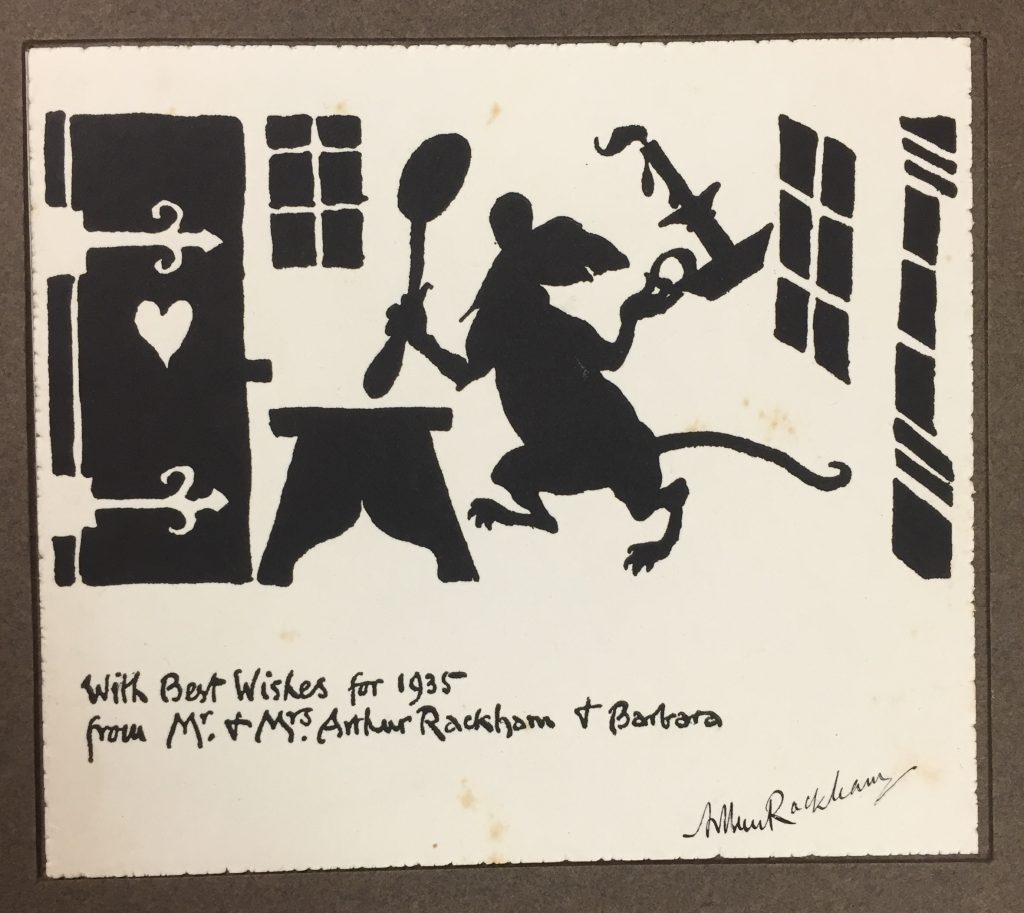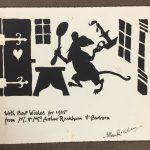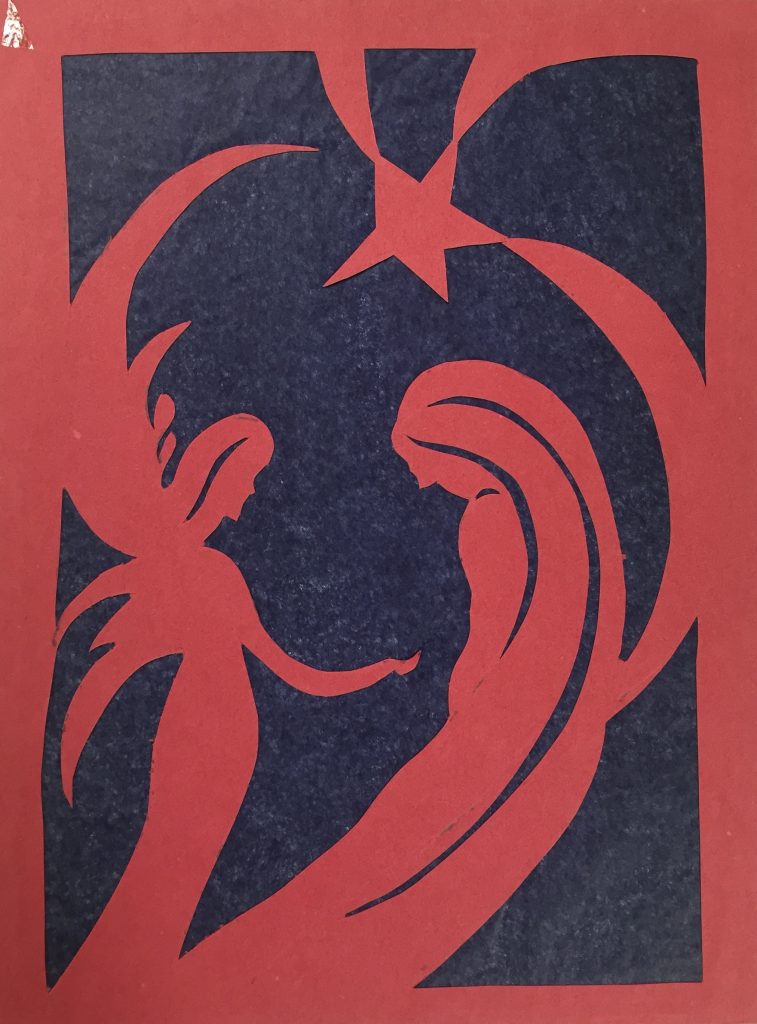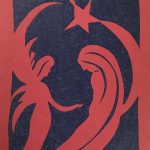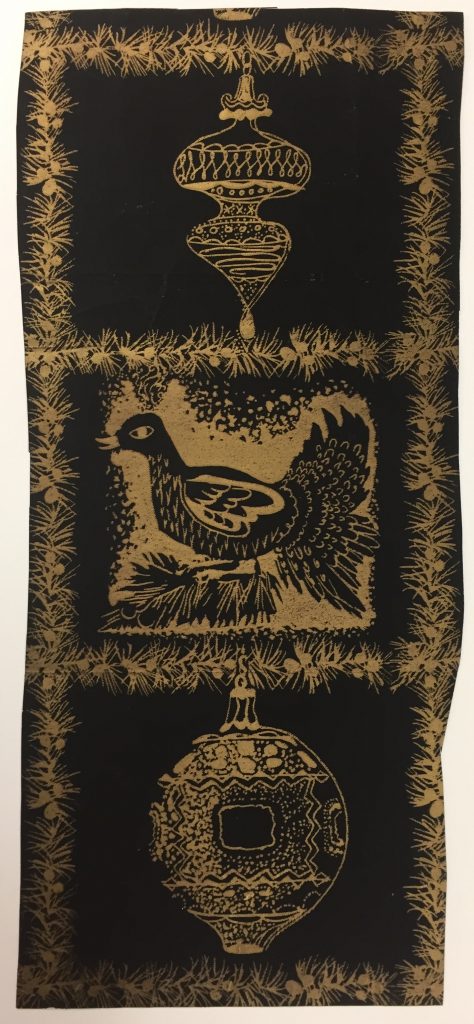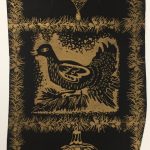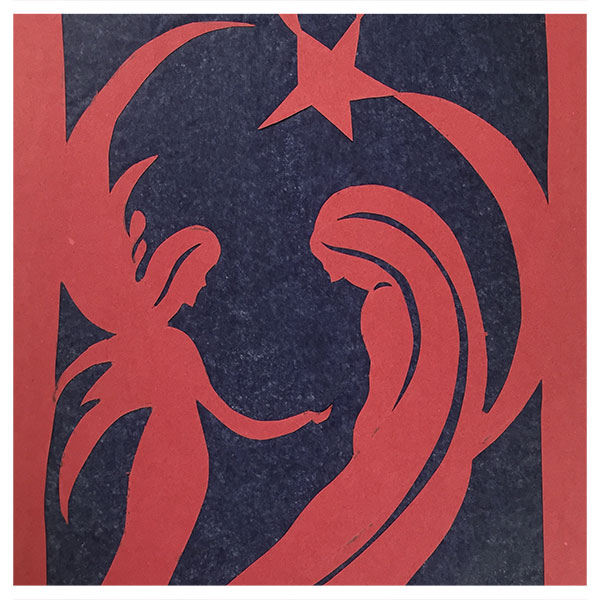
“Dear Miss Crawford,” writes D. H. Lawrence in a letter dated December 23, 1909, “I hope my verses won’t offend you. I know they are poor enough. But do you like my little card?” The “little card,” sent to Grace Crawford and today part of the D. H. Lawrence collection at the Ransom Center, is a small, handmade Christmas greeting card, its front and back covers decorated with watercolors by Lawrence. On the front, four bees surround a stock of delicately drooping bluebells; one bee has attached itself to a flower. On the back, Lawrence has finely rendered a mayfly, with elegantly arranged wings and legs.
It isn’t exactly a typical holiday scene, but it’s one that complements the verses Lawrence has penned inside and labeled simply, “Song.” Here the English writer compares love awakening in the heart to a “field bee, black and amber,” breaking “from the winter-cell to clamber up the warm grass where the sunbeams start.” Lawrence signed it, “To greet you this Christmas.”
Scattered throughout our archives and art collections are a number of personalized seasonal greetings and designs for holiday cards by artists and literary figures. Some, like Lawrence’s, are honeyed and hopeful; others reflect political uncertainty as the year turns over; still others offer social humor, and some demonstrate the creator’s unique personality.
American-born actress Grace Crawford, the recipient of Lawrence’s 1909 greeting, married English artist and designer Claud Lovat Fraser in 1917. The Ransom Center also holds a number of Fraser’s designs for Christmas and New Year’s cards, those created for himself and on commission for others. A New Year’s greeting card design created in December 1915 depicts a woman looking distractedly over her shoulder with the text “Better Times in 1916,” surely a reference to the First World War that had been ravaging Europe for a year and a half by this time.
It’s a stark contrast to the design Fraser created in 1910 that depicts a dapper, fashionably dressed man-about-town (himself, perhaps?), with the text, “With all seasonable greetings.” Among his cards designed for others is a color woodblock depicting the Adoration of the Magi. A 1922 card for Christopher Miller with designs by Fraser reflects sarcastically, “A bird in the bush… is worth two in a woman’s hat.”
George L. Lazarus was an avid collector of Arthur Rackham’s illustrations and books, and the Center holds Lazarus’s bound scrapbook of Christmas cards designed by the artist beloved for his illustrations of The Brothers Grimm’s Fairy Tales, Edgar Allan Poe’s Tales of Mystery and Imagination, and Charles Dickens’s A Christmas Carol, among many others.
The cards—charming, eerie, some even slightly sinister—range from 1900 to 1935, and for a number of these, Rackham reproduced figures and scenes from his published works. Not all are obvious choices for holiday cheer, but, fantastical and expressive, all are uniquely Rackham.
Poet Edward Estlin Cummings, better known as e.e. cummings, was a skilled amateur visual artist, and the Center holds a number of his sketches and paintings. Among them is an undated construction paper design executed in the manner of a stained glass window. It depicts an angel and Mary beneath a single, shining star. Although it’s unclear whether Cummings had any further intention for this cut-out, there are several designs for wrapping paper within the E. E. Cummings art collection. Perhaps the cut-out was a draft design for holiday paper or for a card; perhaps it was a gift, decoration for the home, or simply an hour’s diversion. Regardless, it’s one among many such personal glimpses into the lives represented in our archives.
Visitors can request to view these and other holiday cards and designs associated with figures as diverse as Eric Gill, Harry Houdini, Gordon Conway, Aubrey Beardsley, and many others, by visiting the Center’s Reading and Viewing Room.
All the best for a joyous season and a peaceful and happy 2019.
